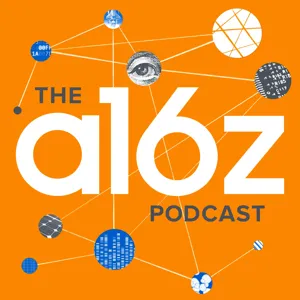Podcast Summary
New tools and breakthroughs in drug development for undruggable targets: Recent advancements in drug development include the use of molecular glues and cell and gene therapies to target previously undruggable proteins, opening up new possibilities for treating previously untreatable diseases
The field of drug development is making significant strides in tackling previously undruggable targets, which are proteins or protein families that have no known pocket for drugs to fit into. Traditionally, drug discovery involves identifying a critical node in a cellular pathway, typically a protein, and working to either inhibit or activate it. However, some proteins, such as transcription factors that bind DNA and turn genes on, have been considered undruggable due to their complex structures. But recent advancements, including the use of molecular glues and cell and gene therapies, are helping to overcome these challenges. Jay Bradner, president of the Novartis Institute For Biomedical Research, shares these behind-the-scenes stories of the new tools and breakthroughs in drug development that are making the impossible, possible. Despite the historical perception that these targets are untouchable, researchers are now making progress in understanding and targeting them, opening up new avenues for treating previously untreatable diseases.
New methods and modalities are changing the landscape of undruggable drugs: Previously undruggable targets like phosphatases are now being successfully targeted using new approaches, challenging the dogma that some proteins are inherently undruggable.
The concept of undruggable proteins may be evolving as new methods and modalities emerge in drug discovery. MYC, a well-validated but undruggable target in cancer science, could potentially be drugged using these new approaches. The landscape of undruggable drugs is changing, as previously thought undruggable targets, like phosphatases, are now being targeted successfully. A novel target is a protein or gene first recognized in disease processes, and while some are easily druggable, others are in undruggable protein families. However, with a commitment to approaching these proteins as druggable and challenging the dogma, some of the best validated targets in disease biology could help patients. An example of this is the development of the first inhibitor of SHIP2, a phosphatase, which was a significant breakthrough in drug discovery. Phosphatases, though important in disease biology, have been difficult to drug due to their complex structure. However, the development of new methods and modalities has led to the successful targeting of this undruggable protein.
Discovering drugs for undruggable phosphatases through allosteric sites: Scientists at Novartis discovered the first inhibitor of a phosphatase by exploring allosteric sites instead of focusing solely on the active site, challenging the traditional drug discovery paradigm and demonstrating the importance of considering alternative approaches and the dynamic nature of proteins.
The discovery of drugs targeting phosphatase proteins, which have long been considered undruggable due to their positively charged active sites and inability to enter cells, required a shift in thinking. Instead of focusing solely on the active site, scientists at Novartis explored allosteric sites, which are only present when the whole protein is there. This approach led to the discovery of the first inhibitor of a phosphatase, which works by gluing the SHIP 2 protein together. This breakthrough was significant because it challenged the traditional drug discovery paradigm, which involves obtaining the crystal structure and looking for competitive inhibitors that bind to the active site. However, proteins are not static structures as previously thought, but rather dynamic entities that live and breathe in the cellular context. By binding to allosteric sites, researchers can confer rippling effects through the protein, activating or shutting it off. This discovery demonstrates the importance of considering alternative approaches and the dynamic nature of proteins in drug discovery.
Exploring new paradigms in drug discovery with allosteric inhibitors and high-throughput screening: New drug discovery approaches using allosteric inhibitors and high-throughput screening challenge traditional methods and require exploring diverse experiments and technologies, leading to innovative therapeutic modalities for various diseases
The field of drug discovery and development is constantly evolving, with new paradigms and technologies leading to innovative approaches in targeting undruggable proteins. The use of allosteric inhibitors, identified through high-throughput screening methods like HTI, represents a shift from traditional crystallography-based approaches. This new paradigm requires thinking outside the box and exploring different experiments and technologies, such as data science and computation. The expanding set of weapons in the pharmaceutical industry includes a diverse range of modalities from small molecules to gene therapies, and the choice of the right weapon for a particular disease depends on the specific biology and target. The combination of solid biology validation, clear understanding of disease processes, and the availability of various therapeutic modalities makes it an exciting time for drug hunters. The emergence of new paradigms, like molecular glues, opens up opportunities for further innovations in drug discovery and development.
Discovering molecular glues to 'short circuit' disease processes: Molecular glues, a new class of medicines, bind to specific proteins and enzymes to trigger their destruction, offering a promising approach to neutralize disease-causing proteins.
Molecular glues, a new class of medicines, offer a promising approach to disrupt disease biology by bringing together proteins that wouldn't normally interact, effectively "short circuiting" cellular processes. This strategy, known as protein degradation, can neutralize disease-causing proteins by destroying them entirely. The idea of using molecular glues for protein degradation was first proposed by Kenton and Roberts around 20 years ago, but it wasn't until recently that the necessary chemical solutions were discovered. These small molecules bind to a protein of interest and enzymes called E3 ligases, leading to the protein's destruction. This method, which has been successful in degrading over 50 proteins, is general and versatile, as it can target a wide range of proteins. The success of this research can be attributed to both scientific innovation and a creative shift in thinking, as well as the persistence and hard work of researchers in the field.
Revolutionizing Drug Discovery with Advanced Technology and Basic Research: Advanced technology and basic research are intersecting to revolutionize drug discovery and development, enabling new possibilities and short circuiting cellular pathways. Novartis is committed to a translational research approach, but success relies on a strong foundation in basic research to fully understand disease biology.
The intersection of advanced technology and basic research is revolutionizing the way we approach drug discovery and development. The use of molecular glues, targeted protein degradation, and advanced cellular systems, among other technologies, is allowing scientists to imagine new possibilities and short circuit cellular pathways. These advances are not just tools, but they are fundamentally changing how we think about discovery. Novartis, for instance, is committed to a translational research approach, taking a long-term view to tackle undruggable targets and bring new medicines to patients. However, the success of this approach relies on a strong foundation in basic research to fully understand disease biology. Ultimately, the goal is to make drugs that make a difference in patients' lives. The journey from lab to patient is complex, but with a focus on innovation and a commitment to translational research, the potential for breakthroughs is immense.
Exploring new gene therapy and genome editing technologies: Nibber Pharmaceuticals is pioneering next-gen medicines using CRISPR, base editing, and prime editing, but careful consideration is needed for patient needs and healthcare infrastructure.
Nibber Pharmaceuticals, with its large team of drug hunters, is pushing the boundaries of disease biology and therapeutic intent, looking beyond traditional gene therapy and towards new hybrid and genome editing technologies. These innovations, such as CRISPR, base editing, and prime editing, hold great potential but require careful consideration for their application in creating medicines for patients. Some of these next-generation medicines may resemble traditional pills, while others, like gene therapies and cellular therapies, may require more invasive methods for administration. It's essential to consider the patient's needs and the healthcare infrastructure when developing these therapies. For instance, a genome editing therapy for sickle cell disease may require a bone marrow transplant, which may not be feasible in areas with limited medical resources. Overall, the creativity and potential for innovation in the field of gene therapy and genome editing are at an unprecedented high, and Nibber Pharmaceuticals is at the forefront of this exciting new frontier in medicine.
Reimagining the therapeutic journey for advanced therapies: Novartis and other pharma companies must rethink manufacturing, site, and dose strength to make personalized, living therapies more accessible and affordable. Continuous learning from patients and clinicians is crucial to improving next-gen therapies.
The process of delivering life-saving therapies, such as CAR T cell therapy, has become as complex as the therapies themselves. Traditional drug delivery, which focuses on getting the medicine inside the patient's body, is now only a part of the equation. The entire process of manufacturing and delivering these personalized, living therapies to patients around the world is a significant challenge. Novartis, and other pharmaceutical companies, must reimagine the manufacturing process, site, and dose strength to make these therapies more accessible and affordable. Moreover, the manufacturing process is uncertain, and the outcome can vary from patient to patient. The responsibility of pharmaceutical companies doesn't end when the medicine goes to market. They must continue to learn from patients and clinicians to improve the next generation of therapies. This reimagining of the therapeutic journey is crucial to making these advanced therapies available to all who need them.






